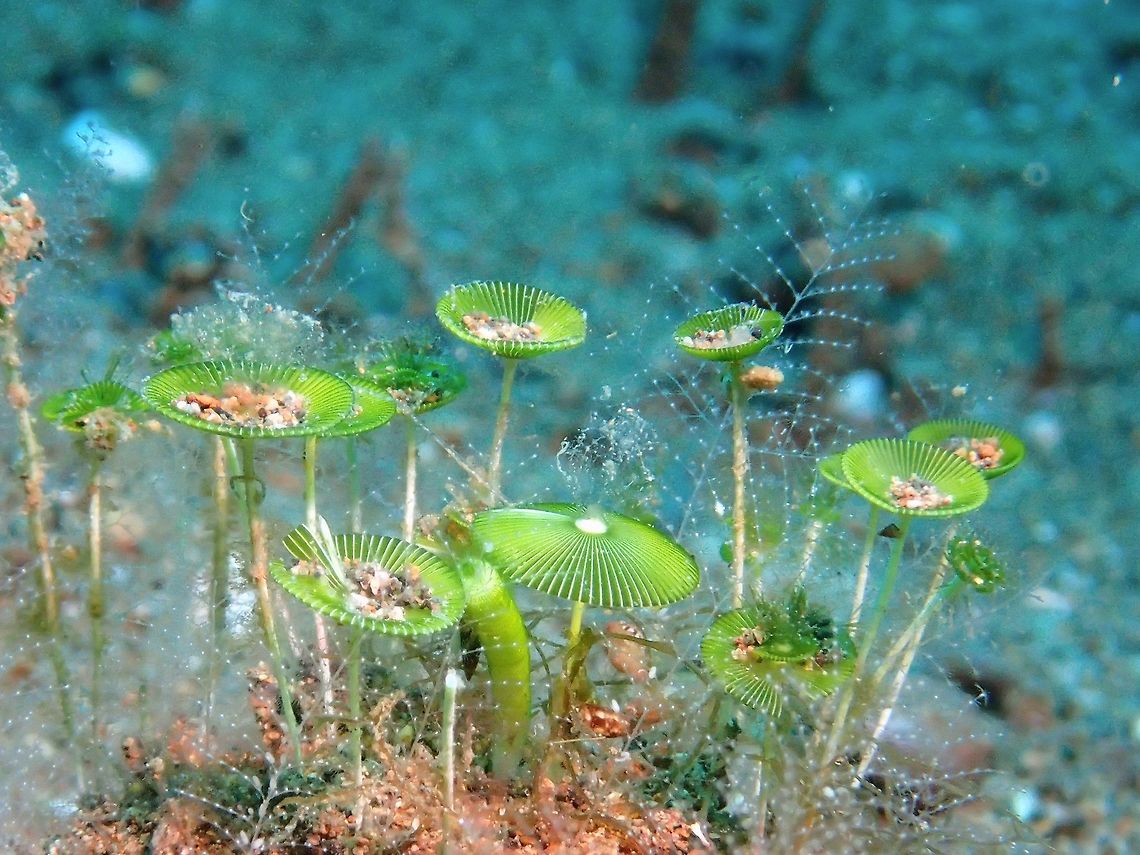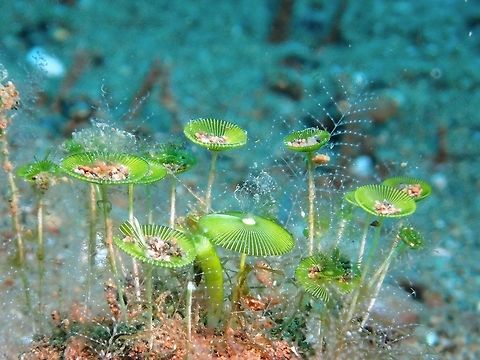 PromotedSpecies introCountry intro
PromotedSpecies introCountry intro
Mermaid's Wine Glass - Acetabularia major
This Acetabularia major algae looks like underwater fungi, the stalk is around 3-4 cm and the green cap is around 1 cm in diameter. They are usually found in shallow sandy bottom.
Generally, the Acetabularia algae are fondly referred to as Mermaid's Wine Glass.
Despite their look, they are a Single-Cell Organism. It comprised of three anatomical parts: a bottom rhizoid that resembles a set of short roots; a long stalk in the middle; and a top umbrella of branches that may fuse into a cap. The single nucleus of Acetabularia is located in the rhizoid, and allows the cell to regenerate completely if its cap is removed. The caps of two Acetabularia may also be exchanged, even from two different species. In addition, if a piece of the stem is removed, with no access to the nucleus in the rhizoid, this isolated stem piece will also grow a new cap.

Acetabularia major is species of green algae from the family of Polyphysaceae.
Most Acetabularia green algae are fondly referred to as Mermaid's Wine Glass.
Typically found in subtropical waters, Acetabularia is a single-celled organism, but gigantic in size and complex in form, making it an excellent model organism for studying cell biology.

comments (17)
They are fairly common in some dive sites, especially the sandy area. Have been trying to figure out the ID and finally got it, first post for the Kingdom of Viridiplantae :D Posted 8 years ago
Still makes it an awesome find! Posted 8 years ago
I was just copying the info from Wikipedia's page for the genus Acetabularia to make sure I have the information correct. And it is listed as Viridiplantae under Kingdom. Posted 8 years ago
That's what I thought too :D Posted 8 years ago
"Mermaid's Wine Glass (Acetabularia major) are delicate green algae that are found in the Indian Ocean. They are unusual because they are among the largest known single-celled organisms. At 3-6 cm in height, they are basically gigantic in size and very complex in form. They consist of a slender stalk topped with an umbrella-like cap. The stalk attaches to rocky surfaces via a root-like rhizoid, which contains the single nucleus. Since they are such large, single-celled organisms, they are ideal model organisms for studying cell biology. During the 1930s–1950s, Joachim Hämmerling conducted experiments in which he showed that Acetabularia's genetic information was contained in the nucleus. He observed that if the cap was cut off, the cell could completely regenerate it. This was the first conclusive evidence that the nucleus controls development and that genes are encoded by DNA in eukaryotes! {Spotted in the Philippines by JungleDragon moderator, Albert Kang} #JungleDragon" Posted 7 years ago